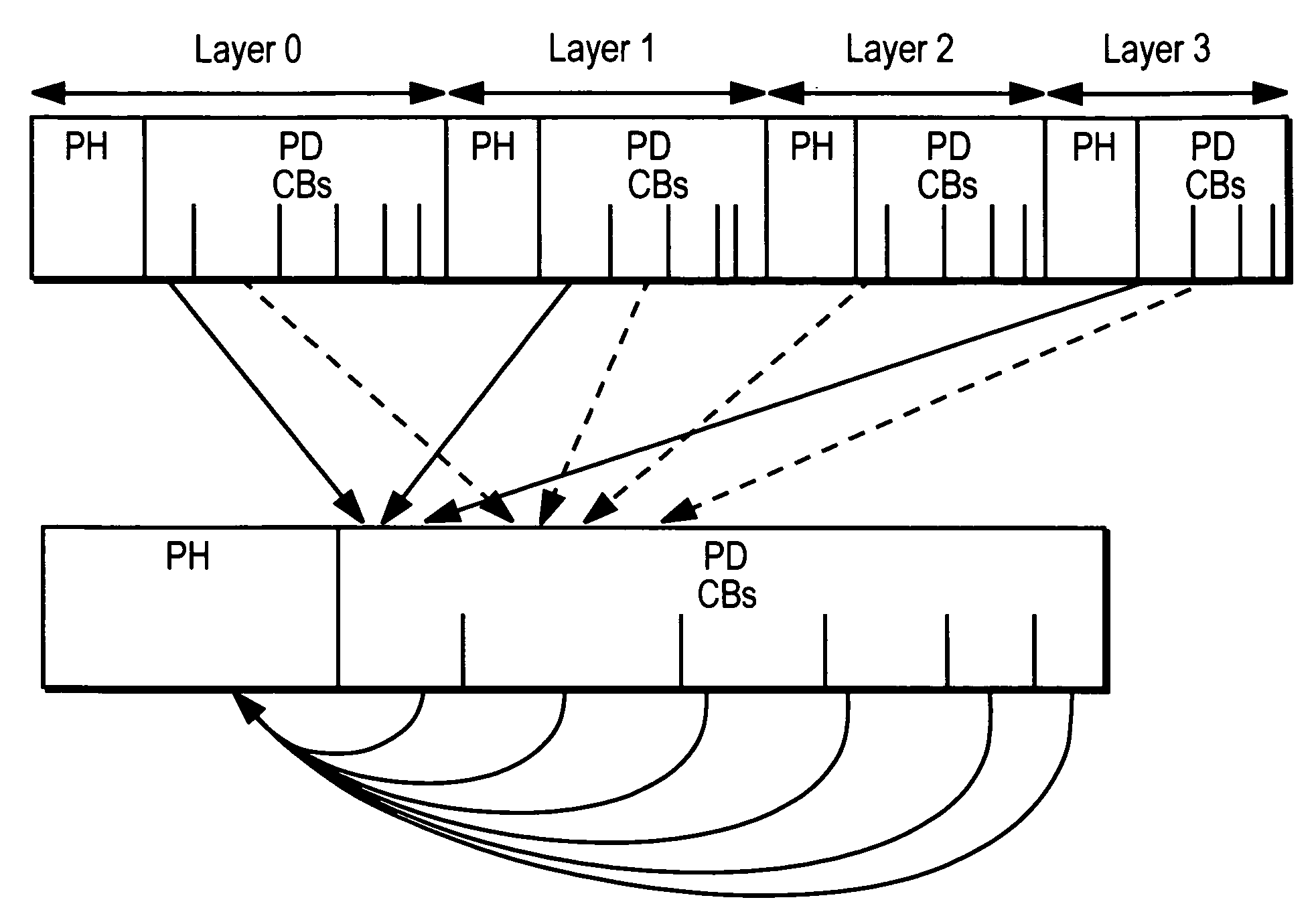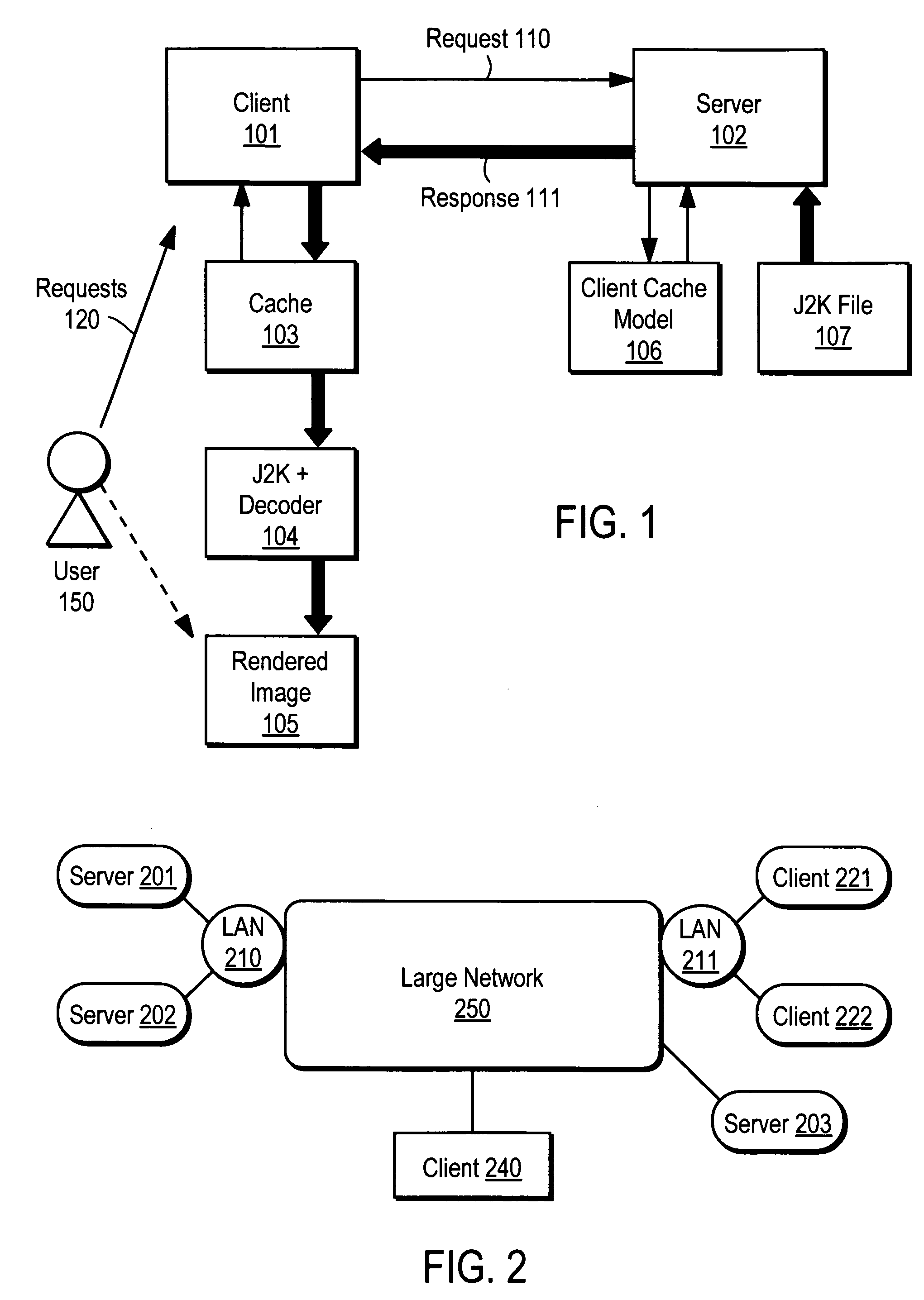JPP-stream to JPEG 2000 codestream conversion
a codestream and jpeg technology, applied in the field of compressed digital images, can solve the problems of inefficient return type for multiple sub-image requests, data-bins not necessarily delivered in complete packets, and large computation of return type by the server,
- Summary
- Abstract
- Description
- Claims
- Application Information
AI Technical Summary
Benefits of technology
Problems solved by technology
Method used
Image
Examples
Embodiment Construction
[0050]The following disclosure describes techniques that may be useful in implementations or applications of the nascent JPIP standard or similar image communication protocols. Some of the inventions are described in terms of HTTP, but could easily be modified to other protocols just as JPIP will be modified to operate over other protocols. Note that the syntax of the JPIP standard is in flux currently, but these techniques will work with simple modifications to reflect the changes in syntax in the JPIP standard. Also note that many techniques described herein are also useful with other image protocols besides JPIP.
[0051]In the following description, numerous details are set forth to provide a more thorough explanation of the present invention. It will be apparent, however, to one skilled in the art, that the present invention may be practiced without these specific details. In other instances, well-known structures and devices are shown in block diagram form, rather than in detail,...
PUM
 Login to View More
Login to View More Abstract
Description
Claims
Application Information
 Login to View More
Login to View More - R&D
- Intellectual Property
- Life Sciences
- Materials
- Tech Scout
- Unparalleled Data Quality
- Higher Quality Content
- 60% Fewer Hallucinations
Browse by: Latest US Patents, China's latest patents, Technical Efficacy Thesaurus, Application Domain, Technology Topic, Popular Technical Reports.
© 2025 PatSnap. All rights reserved.Legal|Privacy policy|Modern Slavery Act Transparency Statement|Sitemap|About US| Contact US: help@patsnap.com



